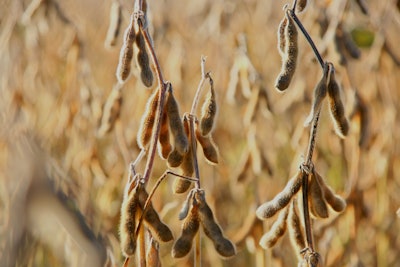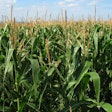
During the Agricultural Outlook Forum (AOF) on February 23, Seth Meyer, USDA’s chief economist, presented the agency’s most recent outlook for commodity markets in the later part of 2023.
He noted that while there continues to be an air of uncertainty, there are positive economic signals.
High inflationary pressures continue to persist and interest rates continue to rise, but economies including China are reopening and COVID is no longer the major risk to the outlook that it was in 2022.
Meyers noted in agriculture, crop and livestock prices are still strong despite declining from recent highs.
“The farm sector, as a whole, enters the new year in good financial health with a strong cash position and solid balance sheet following a year of record-high net cash farm income in 2022,” said Meyers.
Not all commodities or geographies, however, are faring equally well.
“There are risks, including the implications of the western drought on cattle supplies and winter wheat conditions, the cost of producer inputs, the trajectory of future High Pathogenic Avian Influenza (HPAI) cases, always the possibility of unusual weather that disrupts crop production in parts of the U.S and elsewhere, and of course, the ongoing war in Ukraine,” said Meyer.
“But U.S. agriculture is resilient and innovative, and these challenges only highlight the need for continued productivity growth to maintain the abundant and affordable food supply we so easily take for granted.”
Grain market volatility eases, but prices remain elevated
The significant volatility in grains and oilseeds prices, in the immediate aftermath of the war in Ukraine and exacerbated by some countries’ ill-advised export controls, faded into the later part of 2022 as the Black Sea Grain Initiative brought back some Ukrainian supplies and northern hemisphere crops were confirmed.
Grains and oilseed prices are down from recent peaks but remain relatively high by historic standards driven by strong demand and tightening global stocks of many of the major commodities, including corn, wheat, and rice, said Meyer.
“Multiple price supportive features are expected to continue in the new marketing year,” said Meyer. “Across many major commodities, implied global beginning stocks for 2023/24 are still low by historical standards, although current forecasts for a record-large soybean harvest in Brazil indicate a year-over-year increase in global soybean carrying and continued solid demand from China is projected for the coming marketing year.”
In addition, corn used for ethanol in the U.S. is expected to remain unchanged based on expectations for flat motor gasoline consumption and strong global economic growth would support a rebound in cotton mill use.
Input costs for U.S. and other northern hemisphere producers remain elevated, especially fuel and interest costs, although fertilizer prices have retreated noticeably from this time last year, said Meyer.
“Fuel prices have also come down from their peak,” he noted. “Producers are currently facing a somewhat more traditional acreage allocation decision for 2023, where ‘currently’ seems like a crucial qualifier given the last several years, crop insurance projected prices for U.S. producers provide some clarity for per acre revenue guarantees in a high production cost environment.
“Given the totality of these factors, we expect grain and oilseed prices to remain relatively strong, albeit lower than a year ago,” he said.
Planted area expectations
The initial expectations for 2023 planted area indicate growth in total planted area of corn, wheat, and soybeans relative to the previous year, said Meyer.
Combined acreage for the three crops is projected at 228 million acres — a nearly 3% increase from 2022 when acres were constrained by unfavorable planting weather in the spring.
Season average prices received by farmers for all three crops are projected to be lower than in 2022 but remain higher relative to historical averages over the past 10 years.
Among the three main crops, wheat area is projected to increase the most, in response to continued high global prices and tight U.S. and global supplies, partially due to the ongoing war in Ukraine.
“After a period of trending lower wheat acres, this represents a sharp rebound, but is not likely to be a trend reversal for the long-term,” said Meyer. “Soybean area is expected to remain largely unchanged from planted area in 2022.”
Soybean demand driven by domestic crush for biofuel
Demand for soybeans in the U.S. is expected to be driven by stronger demand for domestic crush —largely driven by growth in biofuel use, while exports likely face competition from continued production growth in South American during the 2023/24 U.S. marketing year.
Corn planted area is projected to increase about 3 % relative to last year when plantings were affected by weather-related delays, prevented planting in key-producing regions and some expressed concern by producers about the higher costs of corn production and uncertainty about input availability.
Total wheat planted area for 2023/24 is projected at 49.5 million acres, up nearly 3.8 million acres from last year and the highest wheat area since 2016/17.
The NASS Winter Wheat and Canola Seedings report estimated winter wheat seeded area at 37.0 million acres, up 11 % from 2022/23 and the largest since 2015/16.
Combined spring and durum wheat plantings for 2023/24 are projected slightly higher than last year with the area expansion constrained by expected favorable net returns for corn, soybeans, and other crops in the Northern Plains.
The 2023/24 Harvest-to-Plant ratio is projected at 77.5%, like last year’s 77.6% and below the 10-year average of 82.1% reflecting the long-term drought continuing to affect the Southern Plains region and with the crop entering dormancy in very poor condition, the ultimate harvest ratio will depend significantly on conditions leading up to, and through, emergence.
Ukraine war impact on wheat
Indications are that Ukraine’s 2023/24 exportable wheat supplies will be reduced with winter wheat planted area lower because of the ongoing war.
“It is still too soon to know how the war will affect the area of spring-planted crops in Ukraine, but challenges associated with sourcing inputs and credit in a war zone clearly add significant risk,” said Meyer.
“The continuation of the Black Sea Grain Initiative will be critical in maintaining Ukraine’s wheat and corn exports as these seaports have historically dominated that country’s export shipping options.”
2023/24 crop prices expected to decline
Corn, soybean, wheat, cotton, and rice prices received by producers for the 2023/24 crops are expected to decline relative to the prior year, but nevertheless remain high relative to recent history.
“The soybean season average price is forecast to be lower this year as global stocks rise with the record harvest currently underway in Brazil,” said Meyer.
South American supplies are expected to be higher this year as the U.S. 2023/24 export season gets underway, and with another large South American harvest expected in early 2024, export competition will likely limit potential gains in U.S. exports in the second half of the marketing year.
Soybean oil for biofuel in the U.S. is expected to grow 8 % to 12.5 billion pounds in 2023/24, supporting domestic crush.
“As new renewable diesel producers enter the market, competition for biofuel feedstocks will continue to support soybean oil prices and limit growth in other domestic markets and soybean exports,” said Meyer.
Corn price forecast lower with larger acreage
The corn price is forecast lower in 2023/24 as a larger U.S. acreage and a return to a trend yield, based on a normal weather assumption during the growing season, will boost supplies.
Along with price pressure domestically, the increase in U.S. supplies is expected to put pressure on global prices as well despite anticipation of lower exportable supplies out of Ukraine.
There is potential for close to a 100 million metric ton second crop of corn (under trend yields) being planted in Brazil right now, the condition of which will be better known when U.S. producers are in the middle of planting, and this may have a significant impact on price direction.
Lower exports forecast
Fiscal Year (FY) 2022 ended with record exports of $196.4 billion, driven by high commodity prices and strong demand.
USDA’s revised FY 2023 U.S. agricultural trade forecast, which was released February 23, is for lower exports of $184.5 billion and record imports of $199. billion, reflecting slowing global economic growth, a relatively strong U.S. dollar, softening commodity prices, and lower export volumes for some commodities.
The largest declines in FY2023 agricultural exports are forecast for corn, sorghum and cotton, which are all lowered on volume and in the case of cotton, also on price.
"This in part reflects lower forecast U.S. production of these crops in 2022/23 relative to the previous year, as well as soft global demand for cotton given the broader macroeconomic situation," said Meyer. "Increasing competition from other suppliers, particularly for corn and cotton, also contribute to the lower forecast."
FY 2023 exports for most other commodity sectors are expected to be lower, albeit in many cases from record levels in FY 2022.
“The FY 2023 export forecast, if realized, would still be the second highest on record,” said Meyer.
- China remains the top destination for U.S. agricultural exports, although FY 2023 exports are projected to fall $2.4 billion from FY 2022’s record of $36.4 billion, reflecting reduced sorghum, cotton, and tree nut exports.
- FY 2023 exports to Mexico and Canada are projected to fall slightly, with a larger decline in exports to Canada due to reduced corn sales, which would put Mexico as the second largest U.S. agricultural export market if the forecast is realized.
- FY 2023 exports to the third largest market, Japan, are projected $1.2 billion lower than FY 2022, due to lower expected corn, beef and tree nut sales.
- Exports to the EU are also down slightly, while the forecast for exports to South Korea is on par with FY 2022’s levels.


















